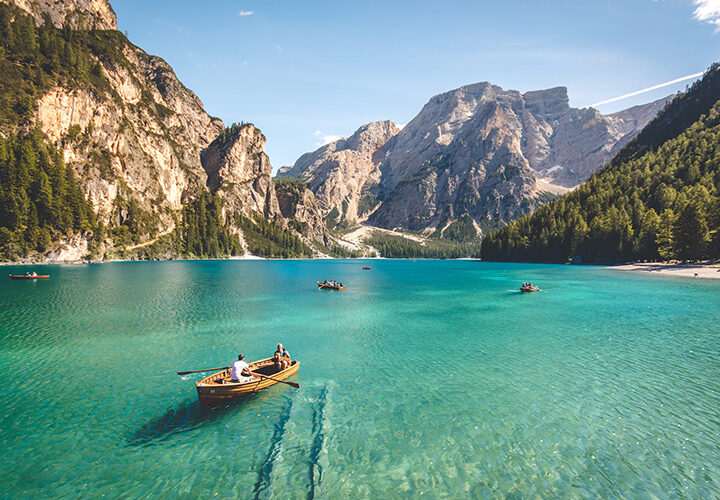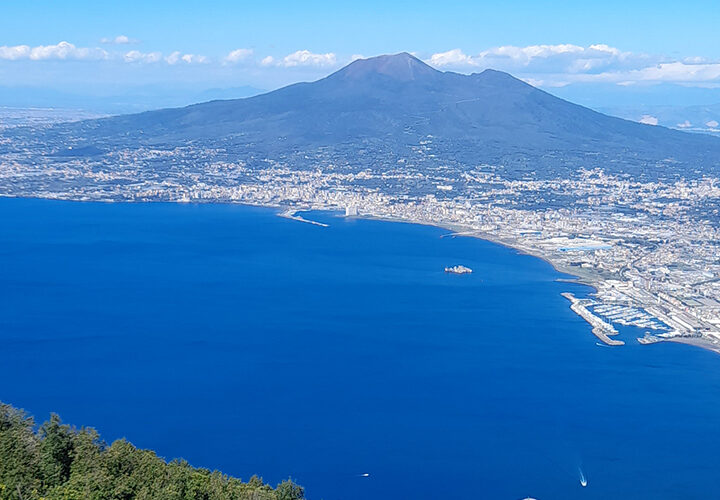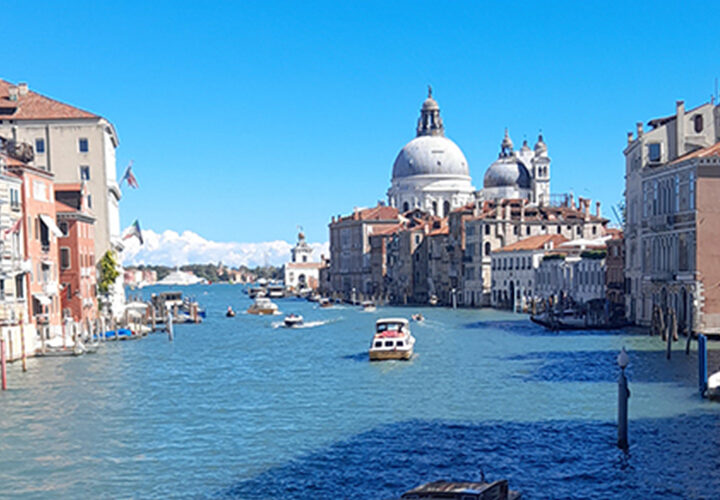Exploring Italy part two: The Eternal City
Following on from our trip to San Marino, we decided to go further down the Italian peninsula to Rome, the capital and largest city in Italy. Traditionally called the Caput Mundie, meaning the capital of the world, Rome used to be the heart of the world’s most powerful empire. Controlling significant amounts of land in Europe, Africa and Asia, at its height Rome really was the centre of the world. Although these days are long gone, the remanence of this grandeur remains in Rome’s stunning architecture, culture, and history-soaked streets. From the most complete ancient building in the world, to the centre of Catholicism, to countless museums and art galleries, Rome is a vibrant modern city built on an ancient past, where you’ll be spoiled for choice for things to do. I believe it is an essential stop on any Italian trip, so after the serenity of San Marino, we decided to head to the Eternal City for a few days.
We left San Marino via the same bus we got, from Rimini Train station, then caught a train to Rome from Rimini with a brief change in Falconara Marttima. It was easily the longest we were on public transport on the holiday, at about 6 hours, however, the scenery is absolutely breathtaking. Taking this route, you go straight through the Apennine Mountains, which run down the centre of the Italian peninsula, and offer great views and a variety of scenery. However, if you’re wanting to visit Rome by itself or as part of a trip that doesn’t involve passing through Rimini.
Getting there
Plane: Rome is serviced by two main airports. Leonardo da Vinci-Fiumicino Airport is the main airport for Rome, the biggest in Italy and one of the biggest in Europe. It is located 22 miles outside the city centre, and there are regular shuttle buses to take you to the city centre. There is also Ciampino-G. B. Pastine International Airport, Rome’s second airport. This one is smaller and tends to handle low-cost and budget airlines. It is 9 miles outside the city centre.
Train: Rome has great train connections to the rest of Italy and Europe. Roma Termini station is the main station for the city centre, and one of the busiest in Europe. You can get direct trains from a variety of locations including Milan, Florence, Venice, Paris and Zurich, to name but a few, and trains to Berlin, Vienna, Amsterdam and London are available with only brief transfers.
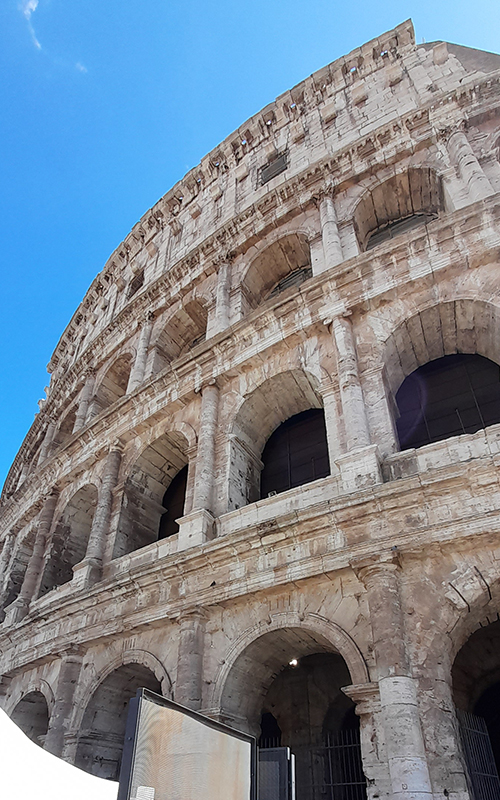
When in Rome…
Rome is one of the most popular tourist destinations in the world, and even if you have no interest in Rome you’ll probably have heard of its many attractions; such as the Colosseum, The Trevi Fountain or The Vatican. Perhaps what makes Rome so attractive is there’s something here for everyone- from world class shopping to extensive museums, to streets upon streets of history. Some people, however, may come to Rome in search of la dolce vita; the good life; in its cafes, gelatarias, and restaurant terraces. The pace of life here is at once crowded and fast; with streets often filled with tourists ogling attractions and roads filled with taxis; and slow and savored, so there’s something for everyone. I would recommend taking a while to do everything, that way you don’t have to rush from place to place as they’re often a bit of a walk away. I’d also recommend researching some places to try before you come, that way it doesn’t feel overwhelming when you get here. Here is a good place to start:
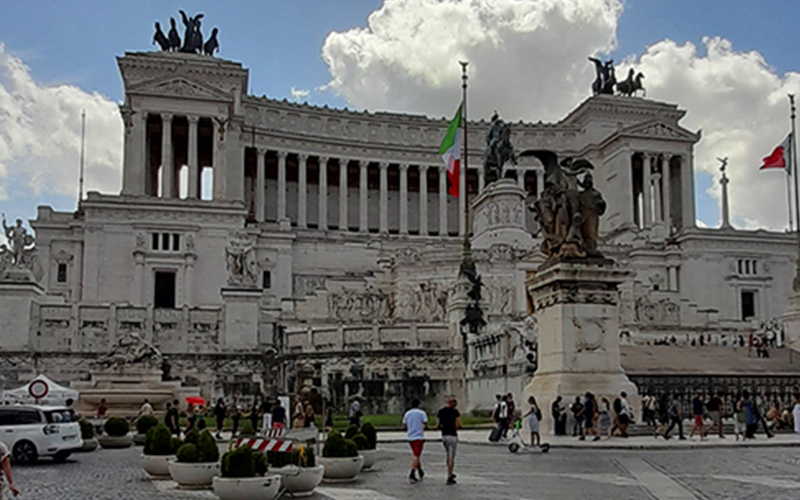
My top twelve attractions in Rome:
- The Colosseum- probably Rome’s most famous and recognizable attraction, The Colosseum is a UNESCO world heritage site and one of the seven wonders of the world. Also known as the Flavian Amphitheatre, the Colosseum was commissioned in 78 AD by emperor Vespasian, and later inaugurated by his son, Titus. It was built on the ruins of Nero’s narcissistic Domus Aurea, as a way of giving this land back to the people of Rome, since it was now a public place designed for public entertainment. Now it’s a beautifully preserved monument that you can look around to learn more about entertainment in Roman times.
- The Trevi Fountain- built by Italian architect Nicola Salvi in 1762, this fountain is built at the intersection of three streets, or “tre vie”, supposedly where the name comes from. It is adorned with beautiful sculptures, including the sea titan Oceanus and two Tritons, mythological creatures that are half human, half fish. It is said to be good luck to throw coins into the fountain: one coin will mean a return to Rome, two coins mean wealth in the future, and three mean you’ll find love and get married in Rome. Although it’s not clear where these superstitions come from, they make up much of the allure of the fountain.
- The Pantheon. The Patheon is the most complete ancient building in the world, being built in 126 AD by Emperor Hadrian. (It was originally built by Augustus, but this building burned down.) It is a temple built to honour the Gods, and is an architectural masterpiece, having the world’s largest unsupported concrete dome. After Christianity overtook Paganism as the main religion of the Roman world, it was converted into a Christian church, which is why it’s been so well maintained to this day. Inside it has lavish marble features, a mixture of its Pagan routes and it’s later Christian re-purposing. The Pantheon also serves as the resting place for two Italian kings: Vittorio Emanuele II the first king of Italy, and his son and successor, Umberto I.
- The Altar of the Fatherland (The Victor Emmanuel II Monument). One of Rome’s more modern monuments, this stunning monument was commissioned in 1885 to commemorate the first king of a unified Italy, Victor Emmanuel II. It symbolizes Italian unity, patriotism and the struggle for independence from Napoleonic rule. It also serves as one of Italy’s most significant war memorials, housing the tomb of the unknown soldier. You can come and look around the behemoth monument, and take a lift to the top for panoramic views of Rome.
- The Vatican- The Vatican is a city state which is the base for the catholic church, as well as the residence of the Pope. It includes St Peter’s Cathedral, the biggest church in the world, the Sistine Chapel, and countless pieces of religious artwork and scripture. Although anyone can visit, this is often considered a place of spiritual importance to Catholics, many of whom make pilgrimages here.
- The Sistine Chapel and Vatican Museums. As well as seeing the awe-inspiring Vatican’s baroque façade, you can also pay to come inside. From inside you can view the incredible Renaissance painted Sistine Chapel ceiling, including the famous Creation of Adam by Michelangelo, and marvel at the lavish interiors. Furthermore, you can visit the Vatican Museums, some of the most extensive collections of art, sculptures, painting and artifacts in the world.
- Castel Sant’Angelo. This impressive castle stands on the banks of the river Tiber, just next to the Vatican City. You can cross the beautiful, sculpture-clad Ponte Sant’Angelo bridge for stunning views of the fortress. It was originally built by Emperor Hadrian as a Mausoleum for him and his family. It was a fortified tunnel connecting it for The Vatican, which Popes could use in Medieval times in case of crisis.
- The Forum. Once the heart of the Roman empire, the forum is now a collection of some of Rome’s oldest buildings. You can wander around the ruins, looking at buildings such as the temple of Saturn, the temple of Vesta, and the Senate building. There is also access to Palatine Hill, one of Rome’s seven hills where the city was originally founded, for panoramic views of Rome. Please note that it isn’t free entry, however many colosseum tickets include entrance to the Forum, so if you’re doing both, I’d recommend getting one such ticket to save money.
- Nero’s Domus Aurea and the Circus Maximus. Nero’s Domus Aurea, or golden house, was a huge palace built by the emperor after the great fire of Rome in 64AD. It was a huge complex with lavish gold furnishings, vaulted ceilings, extensive gardens, underground passageways and even revolving mechanisms to shower guests with flower petals and perfume. It was built as a sign of dominance over the poor and starving Roman citizens, who were struggling to get their lives back together after the fire. When Nero was eventually overthrown, the palace was partially destroyed and fell into disuse, with the Colosseum being built where it once stood. Now, there is very little of the palace remaining as much of it has been built on, but you can still find clues to its existence in the Forum. The same is true for Circus Maxiumus, the old chariot racing area in Rome. Although mostly gone, it is a public park where you can see the layout of the old tracks and buildings.
- Explore the historic centre. Once you’ve moved away from the tourist attractions, the city centre of Rome is beautiful in its own right. Explore beautiful piazzas, picturesque narrow streets and delicious restaurants for an authentic Italian experience.
- The Spanish Steps. These sweeping and dramatic steps served as a connection between the Spanish embassy and Trinità dei Monti Church, and have appeared in countless examples of art and literature. Today they’re a tourist hotspot, offering a beautiful church, fountain and scenic views to those who walk to the top.
- Piazza Navona. This stunning piazza is built on the historic grounds of the Stadium of Domitian, where Roman athletic contests used to be held. It is one of Rome’s most stunning piazzas, with three fountains and some of the finest baroque buildings in Europe. It also contains Bernini’s Obelisk, an Egyptian obelisk originally found in the Circus Maximus and later moved here. The piazza is lined with lovely restaurants and cafes, so like us you can just enjoy sitting here with a drink and taking in the Roman culture and stunning architecture.
Note: many of these tourist attractions can get very busy, especially in tourist seasons. I recommend coming outside peak times if you can (before 10AM and after 5PM) and booking in advance where needed. Bring plenty of water and always be aware in crowded places (see the safety advice below).
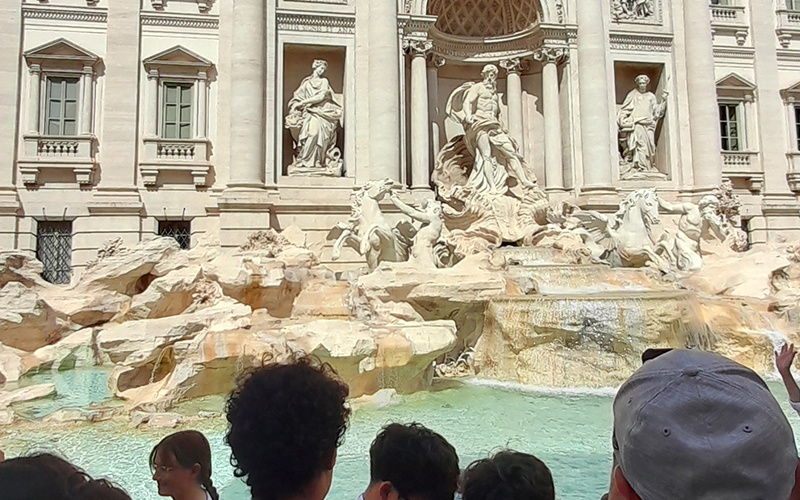
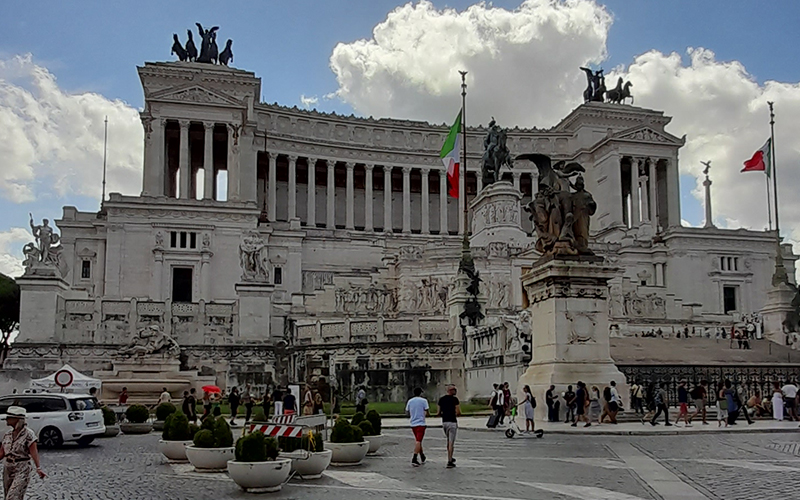
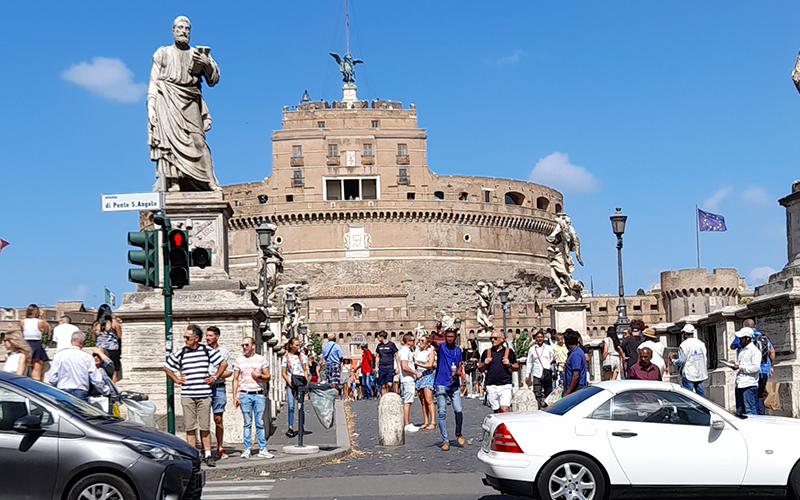
The Vatican City
The Vatican City is an independent city state located within Rome, and the home of the Catholic church. It is an independent country, and is the smallest country in the world, having a total landmass of only 0.17 square miles. For comparison, the total land area of this country only makes up 1/8th of Central Park in New York City. Its independence stems from its place as the head of the Papal State, a state which owned territory in much of central Italy from the 8th Century until the unification of Italy in 1861. However, although all its territory became part of Italy in 1861, the Vatican City refused to become part of Italy, and was allowed its own independence. Although there was some question of what this ‘independence’ meant, in 1929 Italy and The Vatican City signed the Lateran Treaty, which declared it as a sovereign state fully independent from Italy, and decided its borders. Despite this, The Vatican City has had limited United Nations (UN) support, which is what is considered the deciding factor of a country’s independence (when a majority of UN members accept its independence). However, although the Vatican City doesn’t have a seat on the UN, it is one of only two ‘UN observer states’ (the other being Palestine) which means the UN officially recognizes its independence, even when a majority of countries don’t, meaning it can be officially an independent country without being granted a seat in the UN.
Nonetheless, his differentiation serves merely to maintain The Vatican’s religious freedom, and to stop the Catholic church being controlled by a single country. In practice this will make no difference to your visit, you don’t need a visa or even a passport to enter the Vatican City from Rome, and the same emergency services and consular support applies as in Italy. But as well as taking in the art and culture that can be found at the Vatican, you can also boast to your family and friends that you’ve been to the world’s smallest country!

Moving around Rome
With Rome being a city that has developed over many thousands of years, and continues to develop to this day, its attractions aren’t as close together as many city centres. Bear this in mind while visiting, and remember to bring good shoes for walking long distances. Also remember to stay hydrated- Rome can get very hot, especially between April and October, so remember to carry lots of water with you. Street vendors do sell water, especially around tourist sites, but this is often for a very inflated prices, so it’s always best to bring your own when you set off.
But the city layout of Rome doesn’t have to be an issue, and in my experience actually made the experience more enjoyable. If you’re of limited mobility, or want to go one place quite far away from the city centre (such as the Vatican) and come back, then there is a good public transport system, including a fast and effective metro, and open topped buses from which you can take in the sights of Rome. But if, like me, you like walking, this is also very enjoyable. I’d advise looking at the locations of as many attractions as you can (not just where you want to end up) before you set off, and working these into your journey. For example, we set off from our hotel near the Colosseum to visit the Vatican, and along the way managed to see the Colosseum, The Form/ Nero’s Domus Aurea (visible to look at, however we looked around fully the day previously when we had more time) The Altar of the Fatherland, The Pantheon, The Trevi Fountain, The Piazza Navona, Castel Sant’Angelo and finally The Vatican. This meant although the walk from the Colosseum was long, as we planned the route, we were able to see the best of Rome’s attractions, as well as enjoy its beautiful streets and piazzas in between.

Safety considerations when in Rome.
Rome is overall a safe city, and most visits to Rome are trouble free. However, as with anywhere there are always things to keep in mind to help your trip run smoothly. Most crimes and scams visitors fall foul of are small offenses, but knowing how to avoid these can help keep your holiday fun and stress-free. Although some of these may be similar to the first part of this blog, many are unique to Rome so don’t miss out on reading them:
- Pickpocketing is a major concern in Rome, especially in tourist hotspots. Always ensure all valuables are kept out of sight, preferably in a zip bag, and that you’re being vigilant at all times, especially in touristy areas. I would suggest not carrying a phone or wallet in an open pocket at all in Rome- it may be more convenient, but it simply isn’t worth the risk. Also, be aware of people trying to distract you- this may be ‘accidently’ spilling a drink on you, or randomly making conversation with you- often this means an accomplice is trying to pickpocket you while you’re not looking.
- Scams are a common sight in tourist cities in Italy- I’d seen plenty in Milan and Venice before visiting Rome- but they’re so much more common in the nation’s capital. Luckily, if you know what you’re looking for, they’re less of an issue. Usually, they take the form of offering you something like a friendship bracelet or a flower, often putting it on you or your wrist, then demanding payment for it. Just remember no street vendors give anything away for free, and if they offer you something politely but firmly reject it and walk away. Also be aware of street vendors increasing the prices of things. Often, they will offer you something like water for sale, but it will be very expensive, so I’d always recommend bringing your own or going into a shop instead.
- Rome is full of taxis, most of which are friendly and efficient, but be careful for overcharging. This is one scam I have been involved in- after our long train ride, I was feeling ill, hot and tired (I had caught a cold of some description) and just wanted to get to the hotel as soon as possible. We waited in the long line at the taxi rank of Roma Termini station, and after about 10 minutes of waiting a taxi offered us a ride, having skipped most of the long line ahead of us. Feeling ill and tired, we accepted, and although the journey was only about 4-5 minutes, we were charged 75 Euros. There are a few red flags here- firstly, if other people have rejected the taxi, there’s usually a reason. Secondly, taxis usually have a meter to calculate the price during the trip, or the driver will quote you a price as you get in. Neither were the case here, so he was free to overcharge. Always ask beforehand what the price is going to be, and only use taxis licensed by the city- even if, like us, you’re tired and in a rush to get back!
- Being safe at night. Rome is a very busy and vibrant city, so take extra care at night. Stick to well lit, populated areas and (if you’re part of a group) stick with your group. Usually, the tourist sites are pretty safe 24/7, but be aware that away from these hotspots there is a risk of assault and/or mugging, so be vigilant, stay to lit areas and stay together.
- Religious sites. Less of a safety concern, but definitely something to keep in mind. Rome is a very religious city, with lots of religious sites, so remember to dress and act appropriately here. They will often ask that guests cover their shoulders, take off hats and sunglasses, and (sometimes) not wear too short trousers when inside these religious sites. If it’s a warm day and you want to look inside, I recommend wearing something light to cover your shoulders which that can then be taken off when you go back outside. Remember, although they’re beautiful historical attractions, these are active places of worship for many people, especially the Vatican. So avoid swearing, blaspheming or speaking in a loud voice inside these religious sites.
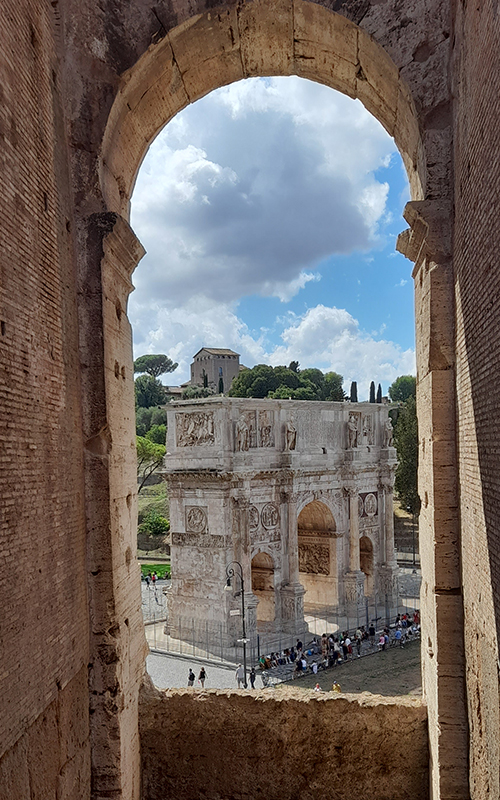
With the smallest country in the world, to the biggest church in the world; the most preserved ancient building in the world to some of the most phenomenal modern monuments in the world: Rome seems to have it all. A city steeped in history, culture, art and culinary delights, there’s a lifetime of things to unpack with Rome’s ancient walls. Rome would make a perfect city break, for however long you wanted to explore this capital, but is definitely unmissable on a journey around Italy. My only qualm I had leaving Rome was that there was too much to do, so make sure you give yourself enough time to explore this magical city. However, Rome has stood proud for well over 2,500 years, so it’s fair to say it’s not going anywhere- and will always be waiting for you to come back, whenever you want to.
In the next leg of our Italy travels, we travelled from Rome to Naples, and from there to the town of Castellammare Di Stabia- from which we’d explore the historic and breathtaking Amalfi Coast.
Link to part three here: Exploring Italy part three: The Amalfi Coast
Written by Jeremy Hodgson


